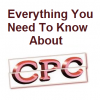Words are powerful. Alone, they can elicit all manner of emotions and encourage readers to act. However, combine them with visuals, and words become even more influential.
As a blogger, you want to be influential; you want to draw in an audience that consistently checks back for your latest thoughts and advice. Doing so with words alone is possible, but in this rich, digital age, people expect a little more.
Thankfully, long gone are the days of clip art-adorned articles with over indulgent header text design. The web content of today needs to be simple yet attractive, and by combining words with beautiful imagery and call-to-action (CTA) elements that simply can’t be missed, you’ll create just that.
Not every blogger is blessed with design skills, and if that resonates with you, don’t worry – it really doesn’t matter. There are plenty of tools out there that’ll make the process of finding great, unique visuals for your blog posts as simple as it should be.
But what kind of visuals should you be using? In this post, we aim to answer that question with our favourite visual content for blogs.
Think about the user experience
A blog’s just a blog, right? Nope – it’s a little more than that. A blog is a piece of web content that people need to interact with, not simply read.
With that in mind, it’s important to create a user experience for every post you publish. No one should have difficulty reading your blog, so ensure every design element – be it the imagery, paragraph length or CTAs – is carefully considered.
Logo
Who are you? How will people remember you?
You need to brand your blog if you haven’t done so already. Ensure the logo is always present (in the top menu or header) in order to surreptitiously insert a constant reminder of who you are into your audience’s minds.
Main (featured) image
Often referred to as the ‘featured image’, you should ensure that blog posts you publish have relevant, eye-catching photo or graphic.
The main image needs top billing, so place it at the top of the content, above the first paragraph. Don’t be afraid to make it big, either – people love visual content and if that’s the first thing they see, the likelihood is they’ll scroll down to see what else you’ve got to say.
Interspersed imagery
You don’t have to stop at the featured image; it’s a great idea to add interspersed imagery throughout the post.
Don’t go overboard, but if you spot opportunities to follow a paragraph with a descriptive photo or screenshot, go for it. In doing so, you’ll break the flow nicely and keep readers engaged for longer.
Infographics
If you’re blogging about a subject that includes a good degree of number work, you could display the statistics and percentages that back up your writing with an infographic.
These forms of visual content are brilliant ways to break down complex subjects and give your audience something more exciting to look at than a post full of numbers.
Mind maps
Mind mapping is a great way to unload one’s brain, and if you’re having a hard time writing about a particular subject, or feel that the way in which you’re doing so is going to confuse your audience, the addition of a mind map may just help.
With mind maps, you can break down the constituent elements of your post and display them within an image that circles key points and displays links between each one.
Mind mapping is a brilliant way to make complex blogs easier to digest.
Textual layout
Do you think about the textual layout of your posts as its own form of imagery? You should – a nicely constructed bunch of words will have just as positive an effect on your audience’s engagement levels as beautiful imagery.
Use short, sharp paragraphs, bullet points and clear headings to minimise the risk of your visitors hitting the ‘back’ button on their browser when they reach your blog.
CTA and social share buttons
A clear call-to-action at the end of your post is vital. What do you want people to do? Sign up to a newsletter list? Browse your product range? To ensure they do, use a nice, bold button featuring a clear instruction.
Equally, you want people to share your work, so ensure you feature recognisable social share buttons somewhere on the page. Most people are intrinsically aware of the Twitter, Facebook and Instagram (to name but three) logos, allowing you to use simple buttons featuring their icons.
Wrapping up
By using the tips above, you’ll be able to create blog posts that inspire and encourage shares. And you don’t need to use every single example – just one or a combination of those that are most appropriate will ensure the brilliance of your writing gets the attention it deserves.



